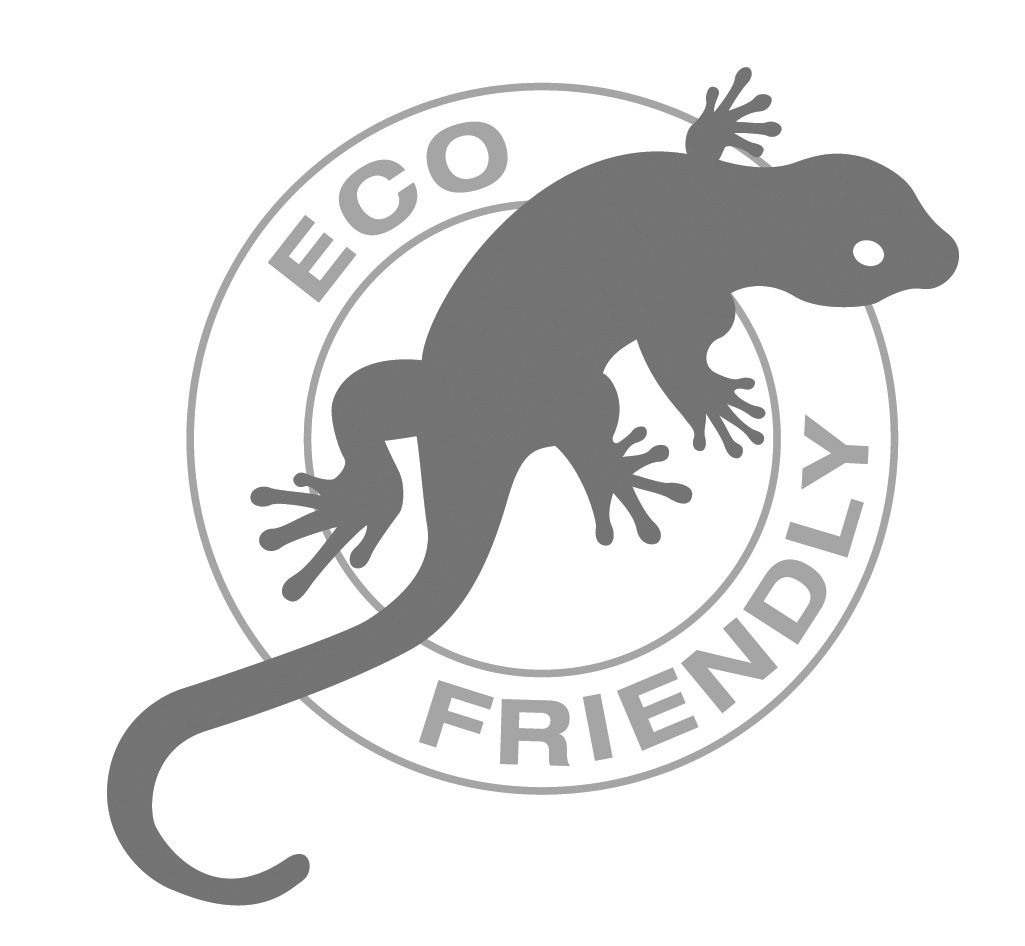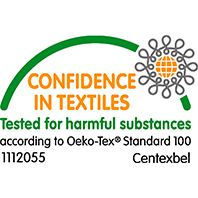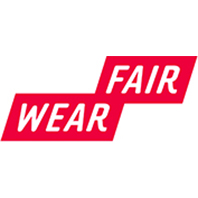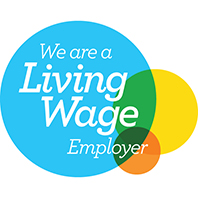How do I place an order?
You can place your print order online for DTG printing which is less than 50. Choose the garment style that you would like. You can choose your garment colour(s), specify the size breakdown that you would like, and upload your artwork. Position your artwork as you would like, confirm all the details and make payment. Please get in touch if you have any questions or would like us to send over a quote or invoice for you.
For orders over 50 units or embroidery orders please request a quote through our website and someone will be in touch.
What payment methods do you accept?
We accept all major credit & debit cards, paypal and bank transfer. We don't start processing your order until funds have cleared.
Can I order a sample?
You can order a DTG printed sample if you want to check the print before placing the bulk order. We don't do screenprinted samples as the set up cost is huge for 1 garment. For all print runs of our MOQ of 30+ prints of the same design on the same garment, we always send a PDF proof before going to print, to confirm print size and positioning.
How long will my order take?
Production is usually 10-15 working days from receipt of the final artwork and payment but this can vary depending on our workload at the time. Shipping is 1-2 days for the UK. Please bear in mind all turnaround times are approximate and, although we will do everything in our power to get your order to you within the expected timeframe, some things are out of our control.
If you have a deadline you need to hit please let us know when you place the order. If its within the 15 working days a rush fee will usually apply. The rush fee is calculated as a % of the total order cost so will vary based on each individual order and how quickly it is required.
Will I receive the exact number that I order?
Misprints do sometimes occur and, although we won't charge you for these, for screen printing jobs we ask you to bear in mind that you may receive fewer items than ordered. For screen printing jobs, we generally order a few spares in case of misprints, but the replacement may not be exactly the same size. This means the order may be short or the size breakdown may be different to that ordered. If you require exact sizes, we recommend that you order extras. We cannot print extras at a later date with screen printing as a screen print run takes so much ink and time to set up. We strongly advise that you do not sell your garments before you receive them.
For misprints during a DTG print run, we are able to order in additional blank garments to print separately at a later date as each garment is printed separately using this process.
How much does screen printing cost?
The garment cost is a flat rate, until you start ordering into the thousands. The printing cost is dependent on the number of colours in the design (more colours = higher cost) and the number of garments in the print run (more garments = lower cost). A screen needs to be prepared for every colour of every design at a cost of £32.00 per screen. We do not save the screens so this charge is applicable every time you place an order even if its the same design we always make a new screen. You can request a quote through our website.
What is the minimum order quantity (MOQ)? Is the MOQ based across a range of size sets?
The minimum order quantity for screen printing is 50 per design and price per print goes down at 100, 200, etc. You can order lower quantities but these would be digitally printed (also great quality, eco, water based inks). It's fine to have a mix of sizes within the order. If you want to mix colours of garments then you need at least 25 per garment.
How do you match colours to the artwork?
For screen printing, we match to coated Pantone references, if you are able to supply one. Or we can find the PMS reference that's closest to the colour in your artwork (using colour matching software) and mix to that. This means we can reproduce the same colour again for repeat order print runs. Some people like to post us a swatch of the colour that they'd like and this is fine too.
How does screen printing work?
A screen is created for every colour of each print. The image is first separated into its individual colour elements (usually using Photoshop). Once separated, each colour element of the design is changed to black and printed out onto separate sheets of clear film at actual print size.
Each screen comprises mesh stretched over a wooden or aluminium frame. The mesh is coated with a UV-sensitive emulsion and left overnight in the dark to dry.
The film is then taped to the front of a screen and the screen placed face-down onto a vacuum UV light box. The screen is then exposed to UV light for a short time. Where the UV hits the screen, the emulsion changes its composition and crosslinks it together. Where the design on the acetate prevents the UV light from reaching the emulsion on the screen it does not crosslink. After exposure the screen is washed and the non-exposed emulsion washes away, leaving a stencil of the design behind.
For textile printing, the screens are attached to the arms of our printing carousel and garments are attached to the platen boards underneath. A multicolour design requires multiple screens (one for each colour) but, after careful registration, the different colour prints from these screens should fit together perfectly to reproduce the original design. A squeegee is then used to press ink through the mesh stencil onto the fabric. Prior to printing and after each colour the T-shirt must be heated under a heater to permanently dry or cure the ink to the fabric.
How many colours can I have in my design?
It is possible to screen print up to 5 colours on white garments but we tend to print only 3-4 colours coloured garments because we use high quality pigment-based inks that need flash curing between prints. For multicolour or full colour designs, DTG printing is generally the best option for small to medium sized print runs. For larger print runs it's probably preferable to have your design remade as four colour process print so that it can be recreated in four colours (CMYK) and screen printed.
Do you use environmentally friendly inks in all your orders?
Yes, we only use eco-friendly printing methods (both screen printing and DTG (digital) printing).
Do you do inside or outside neck prints?
Yes we can print inside or outside neck. For inside neck prints we often use light grey (Pantone Matching System grey 3C), which will show up on a print run of most colours (e.g. it will show up on black tees as well as white tees)). It's important to use light colours for inside neck prints on white or light coloured T-shirts as otherwise the print can show through to the outside.
What is DTG printing?
Direct-to-Garment (DTG) printing is a digital process using high quality inkjet printers that print directly onto the garment, the set up time is minimal, making it ideal for sampling and small print runs. DTG is slower to print and the inks are more expensive so we only recommend DTG printing for larger print runs if the design has lots of colours, has highly detailed or shaded areas or is to be printed onto a textured fabric or over a pocket.
I heard DTG printing isn't as good. Is that right?
Not all DTG is equal - our machines give great quality prints but many DTG printers produce inferior prints that don’t last. Our prints (both DTG and screen) should last pretty much as long as the garment itself. We refined the process even more to get as much detail as possible and to avoid the shiny look that some prints have - we wanted it to look as close to screen printing as possible and now we think you’d be hard pressed to tell which prints are which. You might want to read about the differences between Direct-to-Garment printing and screen printing.
Can you match colours exactly?
No, the design is printed as it is and usually the colours are pretty accurate but we cannot match to a Pantone Matching System or guarantee that an exact colour will be reproduced. If the colour match is very important to you, we recommend that you have a sample printed first. It is possible that we can adjust ink levels, to increase or decrease saturation/brightness but this R&D work is only usually carried out prior to long print runs.
What is the DTG MOQ?
Our standard MOQ is 30 units + but we can do smaller units if required but they are charged at a higher sampling rate.
What is the digitisation fee?
We have to convert your artwork to an embroidery file for our embroidery machines to use to make your design. This costs £28 we save the file so you only pay that once so provided you don't change the size of the embroidery we can use on repeat orders. If the embroidery design is used on a cap and a hoodie this will require a different embroidery file so there would be 2 digitisation costs.
How many colours can be in the artwork?
Broadly we can do up to 8 colours in your embroidery. We match our threads as closely as possible to your artwork. If we don't have the thread colour in our stock range we can either match to the closest stock thread or we can order it in for you and apply the charge to your order.
Can you I have my brand colours embroidered?
Unfortunately we cannot embroider specific pantones. We have a large range of thread colours and we match them to your design, as close as we can. If having your brand pantones is vital, we suggest you opt for screen printing instead.
What is the embroidery MOQ?
Embroidery has an MOQ of 30 units.
Are all the garments you use environmentally friendly?
We source and print eco-friendly/sustainable garments - usually organic cotton but sometimes bamboo, modal, tencel, recycled polyester etc.
Do the garments come with any branding/labelling regarding being ethical?
Yes, the garments have a label on the inside left hand seam with details of their eco credentials.
Is it possible for me to see a sample of the garment before I order?
You can order a blank sample of the garment to check quality, colour and sizing but these are chargeable and are non-refundable You're also welcome to visit our showroom to view garments before you place your order please drop us an email to book in a time.
Will the garments shrink in the wash?
The garments comply with the general performance standards in the clothing retail industry. Some shrinkage and twisting may occur after washing but will stay within the acceptable limits for dimensional stability performance. To minimize shrinking and twisting, it is recommended that the wash temperature does not exceed 30°C in a standard or delicate washing cycle, and the garments are reshaped before drying on a line or flat. Hot washes and tumble drying is likely to affect the dimensional stability of the garments and may also cause fading of colour.
We recommend that you wash at 30°C or below and line dry where possible, which is best for garment longevity and better for the environment. Do not tumble dry and only iron when necessary.
Do the T-shirts have any labels or tags?
Stanley/Stella garments have a back inside neck label, positioned to the left to allow for an inside neck print or sewn in patch. The inside neck label is plain and unbranded, showing the EU size (and underneath a smaller font US size) only. Two other labels are attached in the inside left seam. The wash/care label gives washing instructions and information on where the garment was produced, which is a legal obligation, as well as the garment code and size. The other is branded with the Stanley/Stella logo, Organic Cotton and Fair Wear Foundation Logo and many clients opt to remove this, to remove branding other than their own. Stanley/Stella labels are made of recycled polyester and are designed to be 'tearaway' so removal is easy. The removed labels are also recyclable.
EarthPositive garments have a back neck label with size, the EarthPositive “Tick” symbol and the wording “Climate Neutral”. The inside wash/care label has the EP and low carbon logos. Salvage garments have a back neck label with size, the Salvage “Links” symbol and the wording “100% Recycled”. The inside wash/care label has the Salvage logo and certification marks. Continental Clothing garments have a plain size label in the back neck and a logo on the inside wash/care label. All the wash/care labels carry the FWF symbol except the products made in China.
Can I supply my own garments?
We get great discounts with our suppliers so it is likely to be cheaper for us to source it. We order spares in so cover for any misprints when you order garments through us. If you were to supply your own garments we would need to view a sample ahead of confirming the order to check the quality as different fabrics can be less absorbant and a rougher surface for printing. We are not liable for any misprints on own supplied garments so you would need to send more than you need. We also charge a handling fee on own supplied garments which starts at £2 for a T-shirt and £5 for a hoodie or sweatshirt.
Can I bulk buy blanks?
Stanley/Stella do not allow us to supply blank garments in bulk. All Stanley/Stella garments (apart from one-off samples) need to be decorated before being sold. This can be as little as an inside neck print or having a custom label sewn on. You can buy blanks of some of our other brands such as Native Spirit if you wish.
Is it possible to print onto stretchy polyester material using 100% solvent free inks?
No, it doesn’t work very well for these types of fabric. This generally requires a chemical based ink that can stretch with the material.
What are water based inks?
Water based inks are inks that use water as their main solvent; not all water based inks are equally eco-friendly though. Our inks do not contain the harmful chemicals found in many commercially used inks. All our inks are GOTS certified. You can read more about our water based inks under the Sustainability section of our website.
What type of fabric printing inks do you use?
We predominantly use the Permaset Aqua fabric inks, made by Colormaker Industries. They’re formulated to be eco-friendly and don’t contain harmful ingredients contained in plastisol inks and discharge inks. They’re more eco-friendly than other water based inks too, as many water based inks contain white spirit. The Permaset Aqua inks come in two ranges, with different properties. The Texiscreen Permatone inks are made for printing colours and dark tones onto white or lighter garments. They soak into the fabric and give bright, vibrant prints with a very soft handle. After a wash, you can barely feel the inks at all. The Supercover inks are thicker, opaque inks that sit more on the top of the fabric. We use these for printing light colours onto coloured garments. We can print one or two coats of ink, depending on the look you’re after.
Should I have one coat of ink or two?
We almost always print one coat of ink when printing dark ink onto lighter garments. However, if your print has a light coloured ink and you are printing onto a darker garment, you have a choice. Two layers of ink is very opaque and but feels slightly stiffer (although not rubbery like plastisol inks). One coat of ink isn't completely opaque but feels softer to the touch. One coat is nice on prints with a larger surface area, as it still feels relatively soft.
How durable are the inks? Can my garment be washed?
The inks that we use are high quality and durable. The inks wash fine at 40°C and should last the lifetime of the garment, with no significant fading. However, most of the garments we specify a washing temperature of 30°C, which extends the lifetime of the garment and is more environmentally friendly. We recommend that any ironing should be from the other side only and not to use a tumble dryer.
So why doesn’t everyone use water-based inks?
Water based inks can be difficult to use. Our team have been using water based inks for years so know how to get them right. Many years ago water based inks were not as hard-wearing and durable as plastisol inks and weren’t as opaque – but things are different now. We will not use plasticol inks they are really bad for the environment and why use them when there is a sustainable alternative which is better.
How should I provide my artwork?
Please email your artwork to us at the desired print size as a vectorrised SVG, EPD or PDF file. Alternatively you can send it at the desired print size 300dpi resolution as a PNG file. If it's a very large file you may like to send it by WeTransfer. More info under artwork-guidelines in the footer.
What is colour separation?
For screen printing, every colour is printed separately. The artwork has to be split into its constituent colours so that a screen can be made for each colour. Each ink colour is then pressed through its screen.
How can I perform colour separation?
We would usually do this for you. If there are a lot of similar tones, it may be easier if you can send a layered file, so that it’s easy to distinguish between the colours.
How many colours can I have in my design?
For screen printing we can print up to 5 colours onto a white garment or 3-4 colours onto coloured garments. Our inks include fluoro and metallic specialty options. DTG printing can be full colour but not fluoro or metallic.
Is it possible to print over seams?
We don’t generally print right up to seams or hems or over seams because the print quality is affected if the print area is not completely flat.
Will my artwork be sized differently on different sized garments?
No, most people choose an artwork size that works across all the garments in the print run. If there are adult and children's garments in the print run, or artwork where the size/position is integral to the design, it is possible to create additional print run. Each differently sized print consists of a new print run and must achieve MOQ's. Print cost may be higher since each print run is likely to be in a lower quantity bracket, costing more per print.
If the same print is to go across adult and children's garments with a wide range of sizing, we would normally recommend two prints runs so that the prints can be sized appropriately to the wide range of garment sizes.
Is it possible to screen print a photographic image?
While DTG printing is perfect for this and is usually the best way to recreate photographic imagery some people prefer their work to be screen printed please email us your artwork for further advice. We can screen print photographic images using process colours, recreating the image as a series of dots in CMYK. Some images work better than others (lots of shading tends to work well, flat colours aren't generally well reproduced).
Can you screen print images with a gradient?
For screen printing we can only print one colour per screen. However, a gradient can be recreated as a halftone (a series of dots like old newspaper prints). This works well for high contrast images but not so well for subtle shades and large areas of one shade. If you have an image and you’d like us to advise as to whether it would be suitable for printing in this way, please email us.
DTG printing is ideal for fine gradients and shading.
How can an image that has shaded areas be altered for screen printing?
The image has to be bitmapped and a half tone created. This is generally done in Photoshop. We can offer advice, or do this for you.
Can you create a distressed, vintage look?
Yes. The original artwork is altered to look distressed. We recommend screen printing with only one layer of ink (rather than the usual two layers) for a softer handle and slightly vintage look. You can request that we add some extender in the print to make it a bit more translucent, if you want your print to look slightly faded.
How do I specify what colour I want?
If your design is being screenprinted you can choose from one of our ‘standard colours’ or, if there’s a specific colours that you’d like us to match please specify a coated Pantone reference. Alternatively, we can match the ink colour to your artwork on the computer screen using the closest Pantone match, but this will not be an exact match.
If your design is being digitally printed (DTG) these are printed in CMYK. Please check your artwork in CMYK to check you are happy with the colour representation in this format. For further information check the artwork guidelines in the footer.
Do you deliver to Europe?
Yes, we deliver to all European countries, by road wherever possible. Drop us an email for more information on cost and delivery time.
Do you deliver worldwide?
We regularly deliver to destinations outside of Europe. Drop us an email to find out more.





